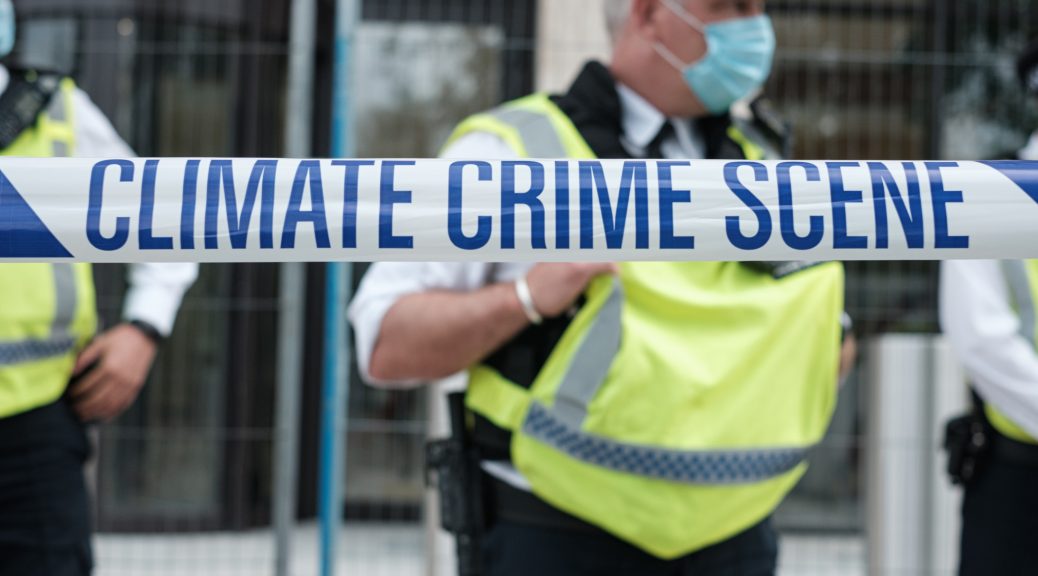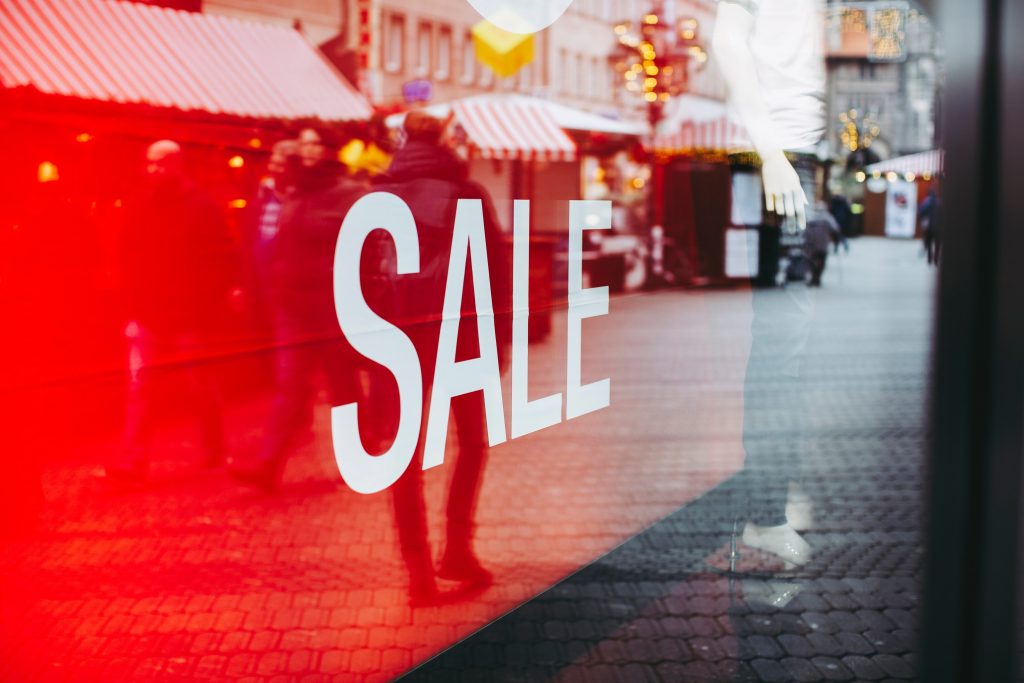
The Car Cartel and the European Green Deal – Decision of the European Commission in the Car Emissions Cartel Case
What are the limits to cooperation between companies in areas of research and development under the rules of antitrust law? The European Commission had to rule on a case in which five German car manufacturers allegedly engaged in illegal collusion regarding the use of emission-reducing technologies (AT.40178). The decision has not yet been published. Leon Kümmel has already taken a closer look at the European Commission’s press release.
What happened?
On July 8, 2021, the European Commission published in a press release that it has fined five German car manufacturers, Daimler, BMW and the Volkwagen Group (Volkswagen, Audi and Porsche), a total of 875,189,000 euros for violations of Article 101 TFEU. This ends a long-running administrative procedure that has already been reported on in various places on this blog (see here and here).
It was eagerly awaited how the competition watchdogs of the European Commission would position themselves in the case, which was described as scandalous at the time (The linked article from Der Spiegel is unfortunately only accessible with a subscription, spoiler: It’s worth it!). But it is not only the fact that the companies exchanged information about their activities and plans countless times over many years in so-called “working groups” that makes this case particularly exciting for antitrust lawyers. This is because the agreements in question did not involve the fixing of prices or the sharing of territories or customers, as would otherwise appear to be the norm. With the decision against the five car manufacturers, the competition authority sanctioned for the first time an antitrust violation consisting solely in the restriction of innovation. What has long been expressly prohibited by law (see Art. 101 (1) (b) TFEU) (restriction of technical development) is now, for the first time, the basis of a Commission decision.
This paper will examine in more detail whether the decision answered unresolved questions and what new questions arise from the decision.
The case
But what exactly is it all about? According to the Commission’s press release, the five car manufacturers are said to have met regularly in the period from June 25, 2009 to October 1, 2014 in so-called “circles of 5” and exchanged views on the development of “SCR technology”. Without explaining this technology in detail, reference is made below to the probably better known term “AdBlue”. Most drivers of a diesel vehicle should be familiar with the additional tank whose contents are supposed to magically contribute to the reduction of harmful NOx emissions through chemical reactions (This, by the way, has nothing to do with the other allegations of the “diesel affair”!).
In the “circles of 5”, the car manufacturers are said to have reached agreement on the size of the “AdBlue” tanks, the possible ranges and on the expected average consumption.
The decision
The Commission accuses the companies of preventing the effort to achieve even better exhaust gas cleaning. The technology should certainly have been available, so that the companies could have achieved exhaust gas purification that exceeded the legal requirements. In particular, the five automakers would have known that better exhaust gas purification would have been possible with the jointly developed technology if larger tanks had been used. In the Commission’s view, this constitutes a prohibited restriction of competition because the companies eliminated uncertainty about the market behavior of their competitors. As is generally known, this describes the purpose of the ban on cartels. So far, nothing new.
So why is the decision of such importance?
Questions that arose at the time
First of all, the disappointment that the Commission’s decision can probably only answer the fewest questions. However, the press release seems to give hope at least to the extent that the “red line” that demarcates permissible, meaningful cooperation from impermissible, anticompetitive coordination can be defined more precisely.
The fact that companies which are actually in competition with each other should not constantly meet and exchange information about their strategies and activities has been almost universally understood ever since Adam Smith (“People of the same trade…”). However, especially with regard to further development and technical progress, it can be useful and helpful for competing companies to join forces in order to jointly develop new innovations that each of them would not be able to develop on their own. The advantages of cooperation in the field of research and development must therefore always be taken into account when making a decision. After all, cooperation enables necessary technologies to be developed faster and possibly better when companies pool their know-how and resources.
But that such meetings are exclusively about permissible communication is likely to remain just wishful thinking (as experienced compliance consultants should know).
Answers through the decision
But the cartel also shows that there were agreements which, according to the Commission’s press release, do not raise any competition concerns. Namely, these are the standardization of the AdBlue filler neck, discussions on quality standards for AdBlue or the joint development of a software platform for AdBlue dosing. In addition, the Commission recognizes that the cooperation to achieve the legal requirements does not in principle give rise to any competition concerns. After all, this is precisely the essential advantage of having a technology at all that protects the environment and consumers.

So where does the boundary lie?
According to the Commission’s press release, the answer to this question seems quite obvious. This is because, in the view of the competition watchdogs, the car manufacturers’ collusion meant that none took technical development to the point of achieving a reduction in harmful NOx emissions beyond the legal requirements (“over-fullfilment”). Thus, the Commission seems to assume that without the carmakers’ collusion, the consumer would have the opportunity to purchase a car that has better emission control due to the said technologies. As a result of the agreements, the consumer’s choice is limited to a vehicle that only meets the minimum legal requirements. In addition, the companies would have restricted competition with regard to Ad-Blue refill comfort. The cartelists’ agreements are the cause of the fact that consumers are not offered what would have been possible in the absence of agreements with regard to these product features.
What is allowed?
But it is questionable whether the answer is really as obvious as it first appears. After all, the question is to what extent the agreements enabled the companies to develop and use the technologies in the first place, or whether they would have had to forego them for cost reasons or adjust prices accordingly without cooperation with competitors. From the consumer’s point of view, therefore, the question arises as to whether, without the agreements, there would actually have been a “greener” car at the same price or whether the consumer would have paid the (higher) price for the “green” one. Doesn’t this circumstance even argue that companies should be given more freedom in the joint development and use of environmentally friendly technologies? After all, the better technology that could achieve over-fullfilment is not much use if it leads to higher prices that consumers will not pay. Or is this also a case of relying on competitive pressures to ensure that the technologies are not only better deployed, but also offered at the same prices? At any rate, from the point of view of the competition watchdogs, the latter seems possible.
From the point of view of the companies, it is also questionable whether they should get involved in jointly developing a technology that can achieve the minimum legal requirements, but then have to expose themselves to the pressure of their competitors. After all, they have previously provided their competitors with their own resources and know-how, which could be decisive for their better products.
The European Green Deal
Already at the beginning of the background, it is explained that the decision can make a significant contribution to the realization of the “Green Deal”. From today’s perspective in particular, innovation is a significant way of meeting the growing challenges of environmental protection. Accordingly, it is probably safe to assume that cases in the area of cooperation in technical developments will often be guided by the yardstick of sustainability. After all, it is also the task of competition to ensure that companies invest in innovations and are exposed to the pressure of competitors (reference is made here to the opening speech by EVP Margrethe Vestager at the Competition Policy and the Green deal conference). Aspects of sustainability are not least product features that may be relevant to customers. Restrictions in these areas must therefore also be measured against the rules of the ban on cartels. In this respect, the prohibition on restricting innovation competition serves as a connecting factor for sustainability issues.
While the whole world antitrust science and practice is looking at the growing challenges of the digital economy, the second – even more significant – challenge of environmental protection is emerging alongside it. Against the backdrop of the “European Green Deal,” the question arises as to whether it was mere coincidence that the first case, which is purely limited to the restriction of innovation competition, places the issue of sustainability so prominently in the foreground. Provided that aspects of sustainability are also taken into account in competition law, it can be assumed that competition rules can be an important building block in the fight against climate change. The decision of the European Commission shows this clearly (once again). It can therefore be assumed that the competition authorities will increasingly look at processes in the area of research and development in the future.
But is it therefore also to be feared that companies will prefer to forego cooperation for better research and development in order not to be exposed to the risk of an antitrust fine? In any case, the fact that the five carmakers discussed all aspects under consideration in numerous working groups over a period of (at least) five years shows that the cartel sanction as a possible consequence was probably only of minor importance. After all, the cartel was only uncovered by a leniency application from Daimler following a chance find during a search in a completely different case.
Penance or summer sale?
With a total of 875,189,000 euros, the fine imposed on the carmakers is not exactly in the low range (even if it seems small at first glance compared to the record fines of previous years). However, the fine could have reached a much higher range if the Commission had not thrown around reductions reduced fines based on its own guidelines. Daimler, for example, was granted full immunity from fines because of its leniency status (after all, the fine for Daimler alone would otherwise amount to around 727 million euros). Since the Volkswagen Group also filed a leniency application – albeit at a later date – and cooperated fully with the Commission, a further 45% reduction was granted. Finally, BMW also benefited from a reduction, as the Commission granted an additional 10% reduction for all cartel participants after they reached agreement in the settlement procedure.
To that extent, the reductions are also in line with the known guidelines of the European Commission and do not represent anything out of the ordinary. It is noteworthy that the fine was reduced by 20% from the outset, because this was the first time that the Commission had issued a ban on cartels based solely on the restriction of competition in the area of innovation. But this is not surprising, because even before (see, for example, the AC Treuhand case) sanctions for novel antitrust violations were initially gifted with lavish discounts lower. (Otherwise, you can probably only get more discounts during summer sales!)

Outlook / What follows
It thus remains to be seen with interest to what extent competition authorities will increasingly take innovation competition into account in antitrust proceedings, and here in particular innovation for the benefit of sustainability, irrespective of the effects on prices, market divisions or the other points that have been more relevant in antitrust practice to date.
In any case, against the background of the decision, companies will no longer be able to hold working groups on an unlimited scale in the future under the guise of research and development.
Finally, the question of the extent to which follow-on actions can be brought before the civil courts remains exciting. If one assumes that – without the cartel – there would be vehicles that achieve even better emission reductions, this would certainly constitute damage for the buyer. However, the question arises as to how far this damage can be quantified. Unlike in the case of price cartels, the damage in this case probably cannot simply be determined using the “competitive price”. The legitimate question arises as to which product the cartel victim would have received if competition had functioned. Beyond that, however, the question arises not only for the buyer of a diesel vehicle affected by the collusion, but also for society and the environment, if one assumes that without the collusion there would have been diesel vehicles with better exhaust gas purification. Can society and “the environment” also be considered victims of the cartel? And who can assert the claims? Looking to the future, it can be said that innovation cartels raise numerous new questions.
Leon Kümmel is a research assistant at the Chair of Civil Law, German and International Corporate, Business and Antitrust Law at Heinrich Heine University Düsseldorf and a doctoral student of Prof. Dr. Christian Kersting, LL.M. (Yale).
One thought on “The Car Cartel and the European Green Deal – Decision of the European Commission in the Car Emissions Cartel Case”
Ich bin gespannt, inwiefern die Kommission sich in ihrer Entscheidung mit dem Schutzzweck von Art. 101 AEUV auseinandersetzt. Herr Kümmel hat es schon angesprochen: Die Größe des AdBlue-Tanks usw. spielt für die Entscheidung der Käufer — und damit als Wettbewersparameter — möglicherweise nur eine untergeordnete Rolle. Sehr viel bedeutender sind die abgesprochenen Bereiche für den gesamtgesellschaftlichen Belang des Umweltschutzes. Daher finde ich spannend, ob die Kommission auch den Umweltschutz als gesamtgesellschaftlichen Belang in ihrer Entscheidung berücksichtigt hat und in welcher Weise die Kommission bei der Bemessung der Geldbuße die Bedeutung der abgesprochenen Bereiche für den Wettbewerb beim Verkauf der Fahrzeuge berücksichtigt hat.